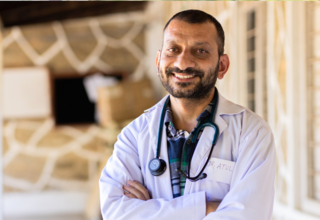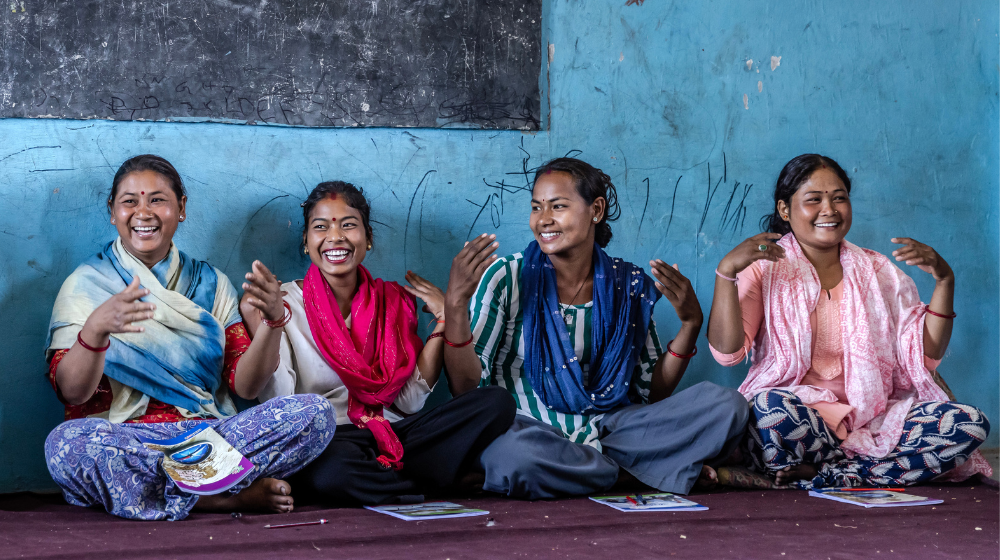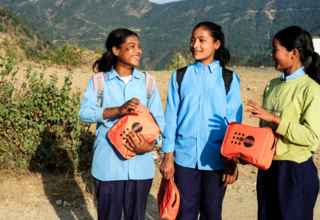I was traveling along with my colleagues and government officials through a dirt road in Sindhuli district, when I felt the ground move at 11:56 am on April 25th, 2015. We were heading towards a safe house for women survivors of domestic and sexual violence. The car swayed violently and there were people running about frantically. In a tiny village, we quickly realized the state of panic and fear. We cancelled the rest of our program and headed back to Kathmandu to activate our agency’s response to the catastrophic earthquake.
As we approach the one-year anniversary, it is a moment of reflection for us on lessons learnt.
Resilient faces
We met many people throughout past one year and were privileged to be able to support them and to admire how incredibly resilient they continue to be in the face of adversity. A few of them are Rachana Khadka (22) of Okhaldhunga, Sarita Tamang (26) of Gorkha, Janak BK (24) of Sindhuli, Ishwori Dangol (31) of Nuwakot, Shreejana BK (17) of Rasuwa, Sabina Danuwar (18) of Kavre and Sita Paudel (31) of Sindhupalchowk. To stay emotionally strong during times of adversity requires great strength.
Sarita was nine months pregnant when the earthquake hit and her house collapsed near the epicenter. Her brother-in-law managed to pull her out of the rubble. When our team reached her village to provide dignity kits containing clothes, sanitary pads, soaps, other hygiene items and torch lights that help meet health and hygiene needs of women like her, she was sharing a tent with her newborn baby, two daughters and two other families. One of my colleagues still recalls her saying in the beginning that she did not expect to survive, but then slowly learned to carry on.
Rachana had a narrow escape when her house collapsed. She alone takes care of her elderly parents after her younger sister was married off at an early age of 13, a common practice in many villages across Nepal. For years she was living with constant pain in her lower abdomen that couldn’t be treated locally. After the disaster, she visited a mobile reproductive health (RH) camp in Phulbari, the nearest place from her home and one among 132 camps organized in the 14 most affected districts in coordination with the government and supported by UNFPA.
The camp doctors referred her to Kathmandu for myomectomy. Her father sold two he-goats to fund part of her treatment. A few weeks later she heaved a huge sigh of relief after she underwent a successful myomectomy surgery. Before she left Kathmandu, Rachana proudly told us that she was recovering mentally and emotionally against all odds and was determined to move on with her life.
Ishwori is more than an earthquake survivor. A seven-month pregnant when the disaster struck Nepal, she not only had a close shave, but also lost her son (7) to the earthquake. In the midst of the agony of losing her son, Ishwori and her husband stood resilient. They shared their pain, tragedy and despair with neighbors. She spent the last month of her pregnancy in fear, but at the same time saw a ray of hope. Like Rachana, she visited a RH camp in her village that referred her to hospital for a caesarean where she had a safe birth after terrifying ordeals.
Janak was one of many young people who worked tirelessly in his district, Sindhuli, to lend his support to earthquake survivors through volunteering his time and whatever resources he could gather. Shreejana, Sabina, Sita and so many others who sought shelter and support in the female-friendly spaces also stood strong despite their tragedies without letting their spirits fall. While dealing with their personal loss, they started the rebuilding process and found strength to carry on with their lives. What impressed me the most was how, shortly after the earthquake, the entire Nepal became one united family. In the intervening months, Nepalis showed incredible strength as they worked to rebuild.
Solid approach
The response by the government, the international and national community highlighted the importance of ensuring a well-coordinated and integrated response, including for sexual and reproductive health (SRH) and gender-based violence (GBV) services. These were the services pregnant and new mothers like Sabina, Sarita, Ishwori and Shreejana received. Many more women and girls received information and services to protect them from all forms of violence. Dignity kits were distributed to meet health and hygiene needs of women of reproductive age. The leadership of the government in both GBV and RH sub-clusters was crucial and enabled UNFPA to co-lead and support a coherent response, benefitting from international and national partners interventions, know-how and tools.
The timely collaboration between the government and development partners paved the way for a successful rollout of life-saving SRH and GBV interventions, ensuring that these needs across the hardest-hit districts were not forgotten. SRH and GBV services in districts throughout the country are still required but there is a funding gap and a need to continue advocating for inclusion as priority to meet the special needs of women and girls.
Way forward
Women and adolescent girls bear extraordinary burdens when a natural disaster of this scale strikes a country. Without the usual protection of families and communities, they frequently become victims of sexual violence, unwanted pregnancies and sexually transmitted infections. They still have the right to decide whether and when to get pregnant, to deliver safely, to be empowered with knowledge and a protective environment to feel free from harassment and violence.
These needs are rarely met when women and adolescents become separated from the lifeline of their families and health systems. Not addressing them at the onset of an emergency can have devastating consequences for the rest of their lives.
Any humanitarian response must go beyond the provision of food and shelter in future too. Reproductive health including family planning and safe motherhood as well as prevention and response to GBV should remain priority issues. We must protect the dignity of women and girls and focus on empowering them to play a role in rebuilding their lives and communities as well as restoring their physical health and wellbeing. By caring for women and girls you can also help protect their children. As the country slowly rebuilds, we need a Nepal where every pregnancy is wanted, every childbirth is safe and every young person’s potential is fulfilled.
— This article is written by Giulia Vallese, UNFPA Representative to Nepal, and was published on Republica



